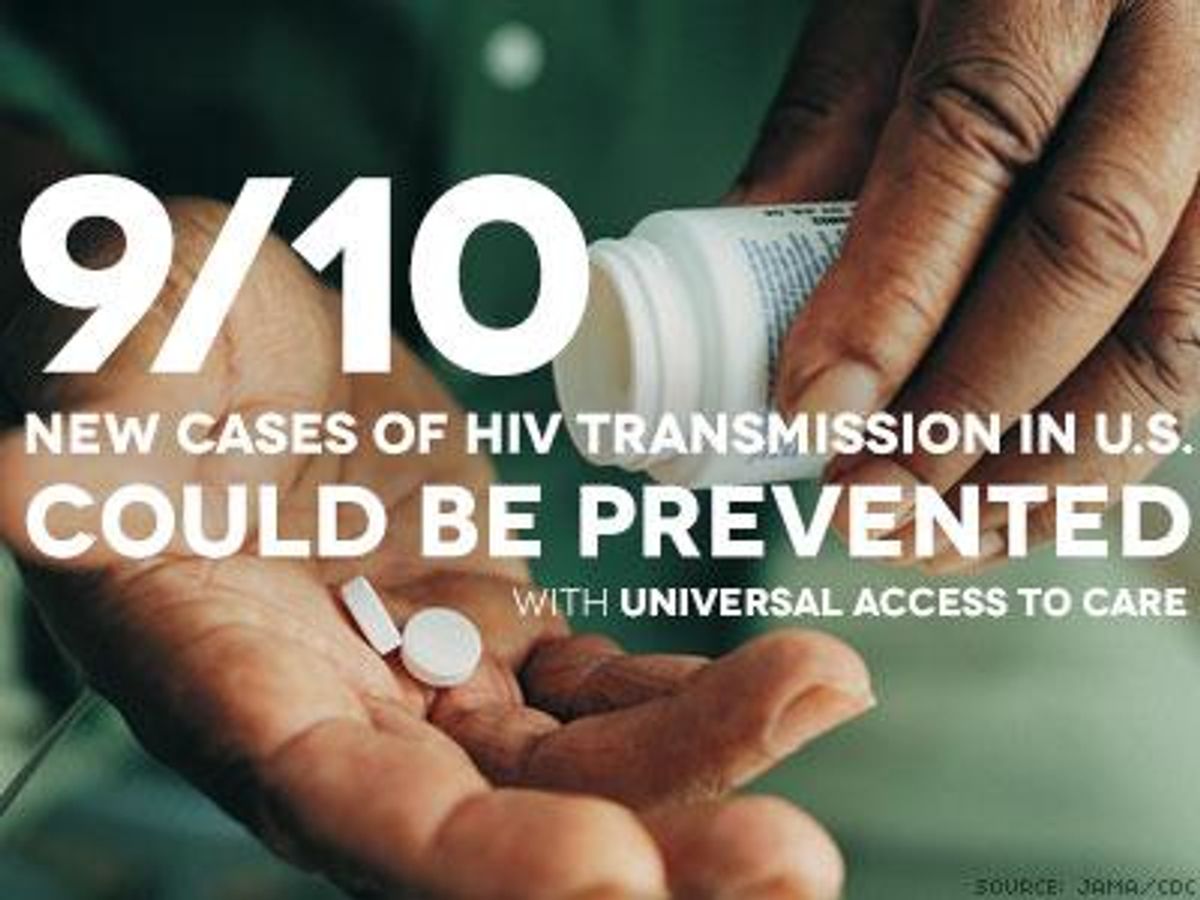New research from the Centers for Disease Control and Prevention that was published today in JAMA Internal Medicine shows that more than 90 percent of new HIV infections in the United States could be averted by diagnosing people living with HIV and ensuring they are immediately hooked up with medical care. That's especially true when people with HIV are diagnosed early, get access to antiretroval medication, and can get their viral load to undetectible levels, making the chance of transmission less than six percent.
“We could prevent the vast majority of new infections tomorrow by improving the health of people living with HIV today,” says doctor Jonathan Mermin, the director of the CDC’s National Center for HIV/AIDS, Viral Hepatitis, STD, and TB Prevention.
Using statistical modeling, the authors of the new study developed the first U.S. estimates of the number of HIV transmissions from people engaged at five consecutive stages of care (including those who are unaware of their infection, those who are retained in care and those who have their virus under control through treatment). The research also shows that the further people progress in HIV care, the less likely they are to transmit their virus.
“By quantifying where HIV transmissions occur at each stage of care, we can identify when and for whom prevention and treatment efforts will have the most impact,” said Mermin.
While some may think this research seems to at least suggest that some of those efforts going into prevention would be better focused on getting people who have HIV into care, that may not be the case. Actually, says Meriman, testing is key: their analysis shows that 30 percent of new HIV infections were transmitted by people who did not know that they were infected with the virus. People who had already been diagnosed as HIV-positivve were much less likely to transmit their infection, in part because people who know they have HIV are more likely to take steps to protect their partners from infection.
“Positive or negative, an HIV test opens the door to prevention. For someone who is positive, it can be the gateway to care and the signal to take steps to protect partners from infection. For someone who tests negative, it can be a direct link to important prevention services to help them stay HIV-free,” said Eugene McCray, MD, director of CDC’s Division of HIV/AIDS Prevention. “At CDC, we’re working hard to make testing as simple and accessible as possible.”
The CDC says that "today’s analysis suggests that simply being in care can help people living with HIV avoid transmission of their virus. According to the model, people who were engaged in ongoing HIV care, but not prescribed antiretroviral treatment, were half as likely (51.8 percent) as those who were diagnosed but not in care to transmit their virus. Being prescribed HIV treatment further lowered the risk that a person would pass the virus to others."
That means that just knowing you have HIV makes you half as likely to pass it to others. And if you had achieved viral supression through, you're 94 percent less likely to transmit their virus than someone who doesn't know their status.
Sadly, researchers pointed out, only about 30 percent of people with HIV have gotten their viral loads to undetectible levels. According to AIDSVu, more than half of the 1.2 million Americans living with HIV in 2011 (the most recently available CDC data) are not in medical care, and 70 percent are not virally suppressed. Most of these individuals have not achieved viral suppression because they are not in medical care. (A full 76 percent of people in medical care have achieved vial suppression.)
Recognizing that entering care is the key to achieving viral suppression, AIDSVu today launched HIVContinuum.org, a site that visualizes the HIV care continuum in five major U.S. cities: Atlanta, Chicago, New Orleans, Philadelphia, and Washington, D.C. The site uses maps to show how many people progress from diagnosis to viral suppression according to area. This interactive website is the first of its kind to map HIV care outcomes across multiple cities and to visualize the number of individuals engaged at each stage of care.
The CDC says that in addition to antiretroviral therapy, HIV care should include risk reduction counseling on how to protect their partners, screening and treatment for other sexually transmitted infections, and treatment for mental health and substance use disorders as ways to approach the HIV epidemic from multiple angles.
Editor's note: To estimate HIV transmission at each stage of care in 2009, the new analysis used statistical modeling based on three national HIV data sources: CDC’s Medical Monitoring Project, National HIV Surveillance System, and National HIV Behavioral Surveillance System.












































































